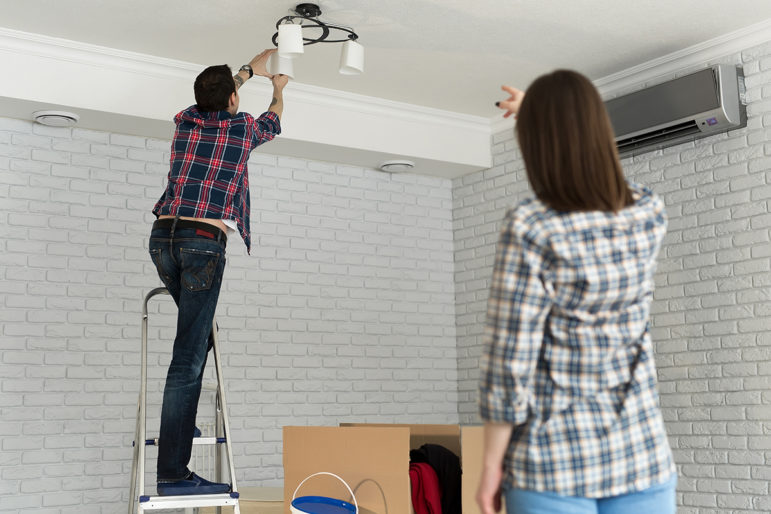
Energy efficiency programs are powerful tools that can reduce the energy we need in our homes, apartments, and buildings which results in both lower energy bills for customers and a reduced climate impact. Fresh Energy is working with partners and key stakeholders to advocate for more equitable investments for under-resourced customers in these energy efficiency programs; these investments would have a major impact on further reducing the energy burden for more Minnesotans.
In summer 2020, Minnesota’s electric and natural gas investor-owned utilities filed their Conservation Improvement Program (CIP) Triennial Plans, laying out the utilities’ energy efficiency programs over a three-year period starting in 2021. Fresh Energy, with our Energy Efficiency for All (EEFA) partners, National Housing Trust and Natural Resources Defense Council, filed comments on these CIP Triennial Plans. Our comments included recommendations and feedback pushing for more equitable programs.
In November 2020, the Minnesota Department of Commerce, Division of Energy Resources, filed its Decisions on the plans which means the utilities can move forward with their programs this January. Here is what you need to know about the programs as approved:
1. New multifamily energy efficiency programs for Minnesota Power customers.
Minnesota Power, for the first time, has proposed two dedicated energy efficiency programs for multifamily buildings: Multifamily Direct Installation and Custom Multifamily Efficiency.
- Multifamily Direct Installation provides an energy analysis of common areas and individual units, direct installation measures (such as LED light bulbs), education to renters and building owners, and a report identifying additional energy efficiency opportunities.
- Custom Multifamily Efficiency provides incentives for whole-building energy efficiency improvements in multifamily buildings.
Some of these aspects were included across Minnesota Power’s programs in the past; however, Minnesota Multifamily Affordable Housing Energy Network (MMAHEN), which Fresh Energy co-leads, has been engaged with Minnesota Power for several years to support efforts to develop robust, standalone multifamily programs. We are pleased to see these two programs moving forward.
2. Steps toward access for renters and manufactured home residents.
In addition to Minnesota Power’s new multifamily programs, other proposals for increased access to energy efficiency emerged in the utilities’ CIP Triennial Plans. Xcel and CenterPoint proposed to continue the Renter Kits component of their Multi-Family Building Efficiency program, which provide direct installation measures and educational materials to renters whose building owners choose not to participate in the program. Fresh Energy and our EEFA partners, including Community Stabilization Project, InquilinXs UnidXs por Justicia, National Housing Trust, and Natural Resources Defense Council, were happy to support Xcel and CenterPoint in this initial concept and are glad to see it continue.
In addition, Minnesota Energy Resources Corporation (MERC) has introduced a new program for manufactured home parks, a uniquely hard-to-reach housing type, including direct installation measures and energy efficiency education. Manufactured housing, which can include prefabricated homes, mobile homes, and modular homes, is an important subset of unsubsidized affordable housing, and we are encouraged to see MERC’s efforts to better serve these customers’ needs.
While there is still much work to be done to expand access to energy efficiency programs, we are pleased to see these important steps being taken.
3. Detailed annual reporting for programs serving under-resourced households and multifamily buildings.
Fresh Energy and our partners recommended that utilities proactively provide more information on the performance of their programs serving under-resourced households and multifamily buildings, including the number of market-rate vs. affordable buildings served, energy savings achieved, and incentives provided in each building type. The Department of Commerce, Division of Energy Resources agreed with our recommendation. Going forward, utilities are required to include this detailed reporting in their annual status reports, which will allow for organizations like Fresh Energy and our partners to to better track and evaluate program performance.
4. Programs still do not reach their full potential.
Despite the positive steps mentioned above, as well as utilities generally meeting or exceeding their minimum spending requirements for programs serving under-resourced customers, the approved programs still fall short of the full range of potential identified in the Minnesota Energy Efficiency Potential Study. Even though many of the utilities’ approved budgets and energy savings goals represent an improvement over previous years, there is still work to be done to ensure that energy efficiency programs evolve and grow to more equitably serve all Minnesotans.
5. Financial incentive remains a significant opportunity.
The outcome of the CIP Triennial process underscored the importance of identifying meaningful incentives to encourage utilities to invest in programs serving under-resourced customers. Fresh Energy and our partners at National Housing Trust and Natural Resources Defense Council are eager to move forward with our proposal to incentivize stronger performance on energy efficiency programs serving under-resourced households, which received initial support from the Public Utilities Commission earlier this year. We look forward to working with key voices in the months ahead to finalize our proposal, which will help improve energy efficiency and reduce energy burdens for more Minnesotans.
Ensuring a just and equitable energy transition is one of the imperatives at the heart of Fresh Energy’s work, and we remain committed to increasing affordability through energy efficiency in the households and communities that need it most. Stay tuned for future updates!
